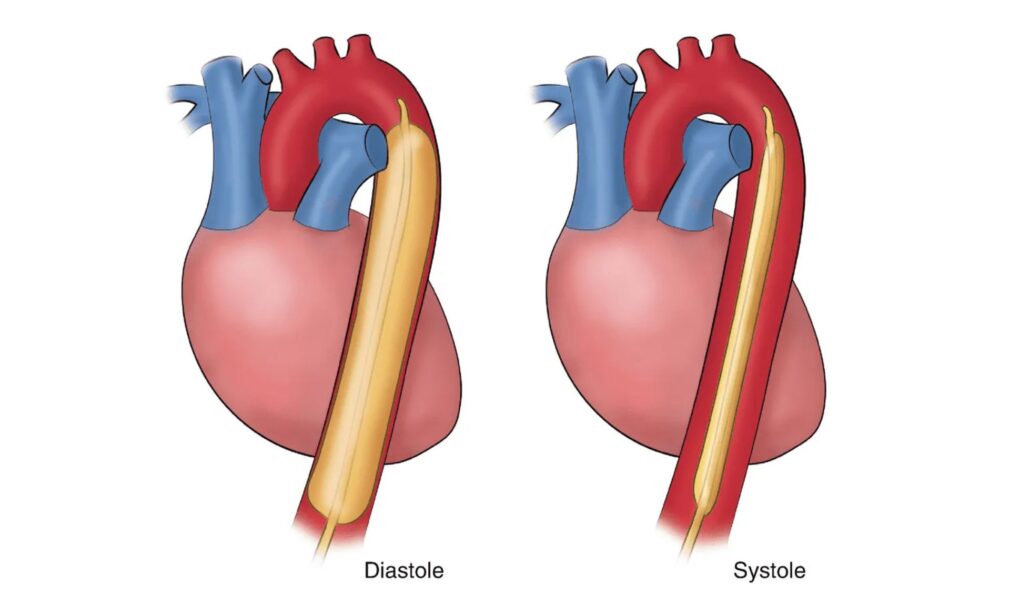Intra-Aortic Balloon Pump (IABP) Therapy in Mohali
What is an Intra-Aortic Balloon Pump (IABP)?
An Intra-Aortic Balloon Pump (IABP) is a specialized mechanical device that helps the heart pump more blood to the body and improve blood flow to the coronary arteries. It’s used in critical heart conditions where the heart is too weak to function on its own, such as after a heart attack, during severe heart failure, or during high-risk cardiac procedures.
Dr. Honey Sharma, a leading interventional cardiologist in Mohali, provides expert IABP therapy for patients in life-threatening cardiac situations, ensuring timely intervention and advanced care.
When is IABP Used?
The IABP is not a treatment for heart disease itself but a temporary support device that stabilizes patients until a permanent treatment can be performed. Dr. Honey Sharma uses IABP in Mohali for:
Cardiogenic shock after a major heart attack
High-risk coronary angioplasty or stenting
Severe heart failure
Complications during or after open-heart surgery
As a bridge to heart transplant or ventricular assist devices
Acute mitral regurgitation or ventricular septal rupture
How Does an Intra-Aortic Balloon Pump Work?
The IABP consists of a balloon attached to a catheter, inserted into the aorta (the main artery from the heart). The device:
Inflates during diastole (heart relaxation) to increase blood flow to the heart muscle
Deflates during systole (heart contraction) to reduce workload and help the heart pump blood more easily
This counterpulsation therapy improves oxygen delivery to the heart and boosts overall circulation.
Benefits of IABP Therapy
Patients undergoing IABP insertion in Mohali with Dr. Honey Sharma experience:
Immediate stabilization in critical heart conditions
Improved blood flow to vital organs
Reduced strain on a weak heart
Better recovery chances after cardiac events
Increased safety during complex angioplasty
Step-by-Step: IABP Procedure with Dr. Honey Sharma
1. Pre-Procedural Preparation
Detailed cardiac evaluation and imaging
Consent and explanation of the procedure
Local anesthesia and mild sedation
2. Device Insertion
A small incision is made in the groin or arm artery
The catheter with the balloon is guided to the aorta using fluoroscopy
The balloon is synchronized with the patient’s heartbeat via an ECG
3. Post-Insertion Care
Continuous monitoring in the ICU
Adjustment of balloon timing for optimal support
Gradual weaning off the device once heart function improves
Who Needs IABP Support?
The IABP is used for patients who:
Have severely reduced heart pumping function
Are in cardiogenic shock
Are undergoing complex cardiac surgery or high-risk PCI
Cannot maintain stable blood pressure despite medications
Why Choose Dr. Honey Sharma for IABP in Mohali?
Extensive expertise in critical cardiac care
Access to state-of-the-art cath lab in Mohali
Rapid response for emergency cases
Personalized treatment with careful risk assessment
Serving patients from Mohali, Chandigarh, Zirakpur, and Panchkula
Risks and Safety of IABP
While generally safe, IABP therapy can have risks:
Bleeding at the insertion site
Infection
Damage to the artery
Blood clots
With Dr. Honey Sharma’s skilled technique, advanced monitoring, and aseptic precautions, these risks are minimized.
Life After IABP Therapy
Once the IABP is removed, patients may require:
Ongoing cardiac rehabilitation
Medications to improve heart function
Lifestyle changes to prevent further heart damage
Follow-up visits for heart monitoring
IABP vs. Other Mechanical Circulatory Support Devices
| Feature | IABP | Impella / ECMO |
|---|---|---|
| Invasiveness | Minimally invasive | More invasive |
| Duration of Use | Short-term (days) | Short-to-medium term |
| Purpose | Augments natural heart pump | Replaces or bypasses heart |
Frequently Asked Questions – IABP in Mohali
1. Is IABP permanent?
No, it’s a temporary support device used until the heart recovers or a long-term treatment is done.
2. Does IABP hurt?
The insertion is done under local anesthesia; mild discomfort may occur but no major pain.
3. How long can a patient stay on IABP?
Typically from a few hours to several days, depending on the condition.
4. Is IABP available in Mohali?
Yes, Dr. Honey Sharma offers advanced IABP therapy at a fully equipped cardiac facility in Mohali.
5. Can IABP be used during angioplasty?
Yes, it’s often used during high-risk PCI to ensure heart stability.
6. Is IABP safe for elderly patients?
Yes, if medically indicated and monitored closely.
7. Will I need surgery after IABP?
Sometimes, IABP is used as a bridge to surgery or other procedures.
8. Is the procedure covered by insurance?
Many insurance plans cover it; check with your provider.
9. What is the survival rate with IABP?
It significantly improves outcomes in critically ill cardiac patients.
10. Can IABP be done in emergency situations?
Yes, it is a standard emergency intervention for severe heart failure and cardiogenic shock.
Book Emergency or Planned IABP Therapy in Mohali
If you or a loved one is facing severe heart failure or critical heart complications, immediate intervention can save lives.

